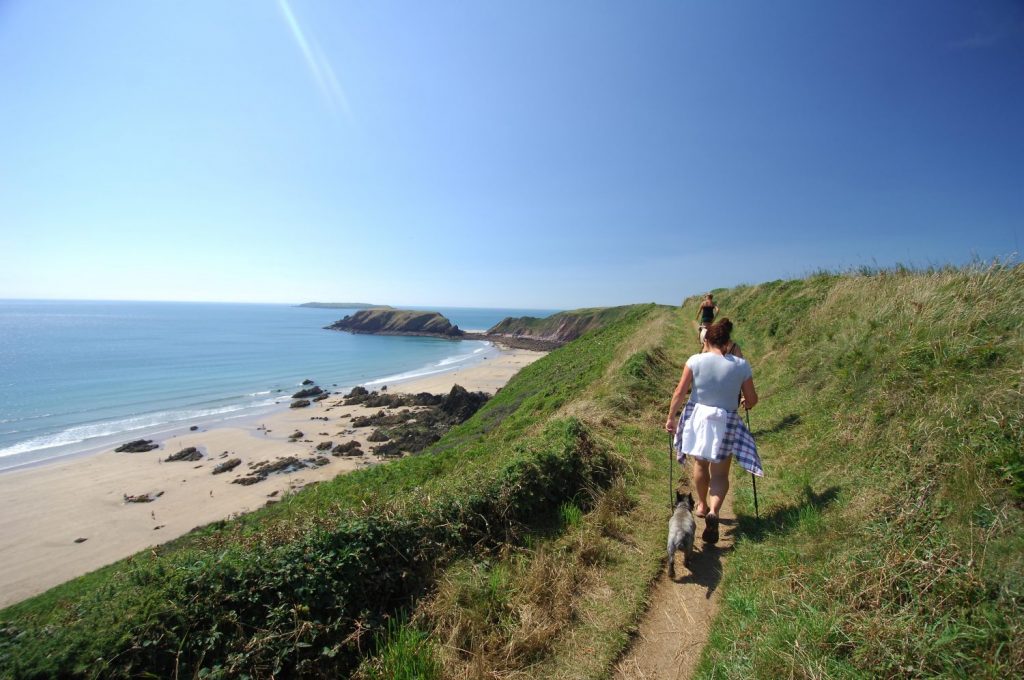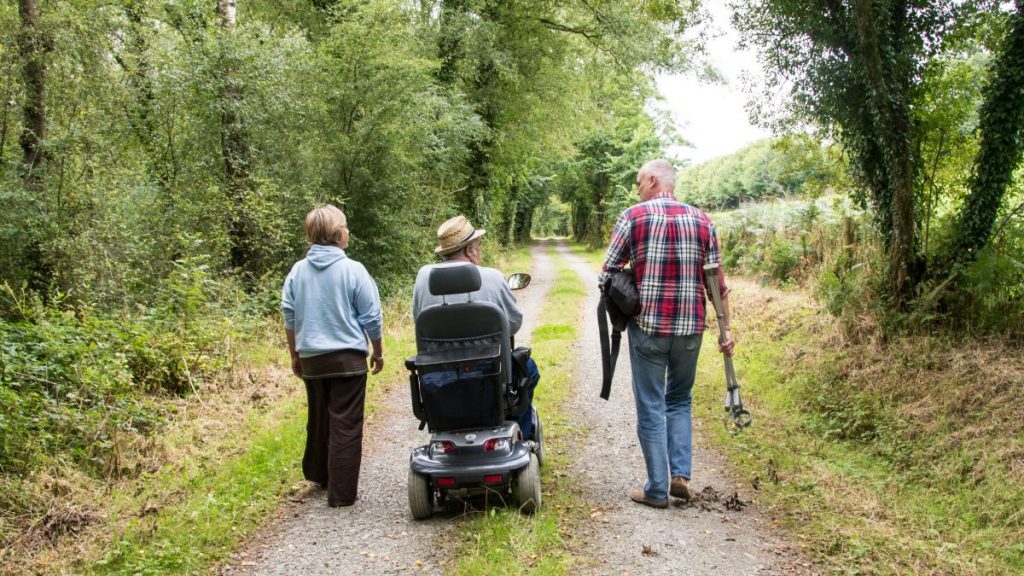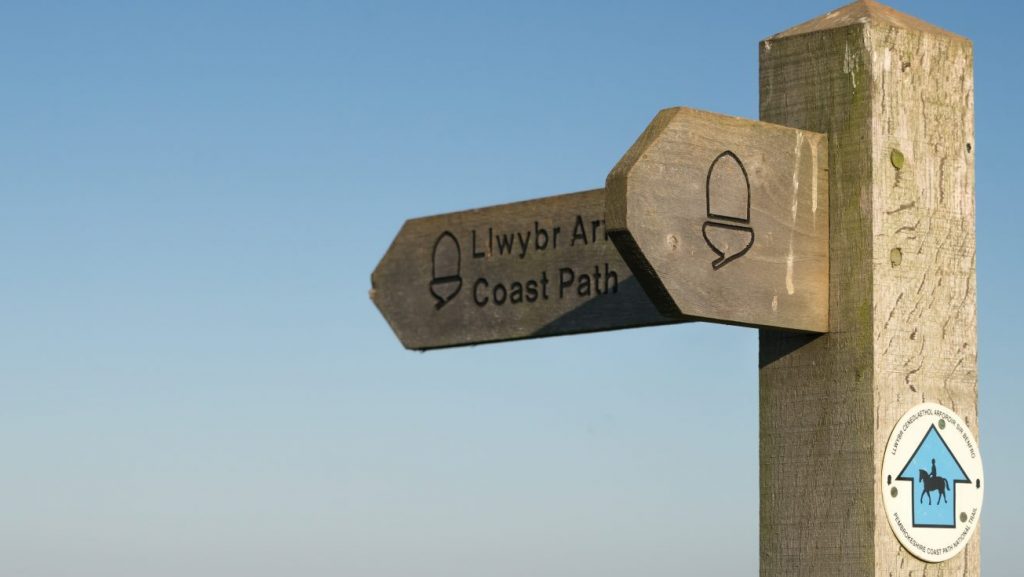DISTANCE/DURATION: 3.7 miles (5.9 km) 1 hour 30 minutes.
PUBLIC TRANSPORT: *Puffin Shuttle 400 (*seasonal, hail & ride).
CHARACTER: Cliff edge, moderate but occasionally steep, 1.0 mile (1.75 km) minor road walking.
LOOK OUT FOR: Coastal views, attractive coves, exposed stone coffins in cliffs near the limekiln (St Brides Haven), St Brides Church and Victorian “castle”.
CAUTION: Take care through farmyard at Lower Broadmoor.
The coast between Mill Haven and St Bride’s Haven makes for great clifftop walking, with views across the sweep of St Bride’s Bay to St David’s Head and Ramsey Island.
The route picks its way along rugged cliffs of rose-coloured sandstone, which add warmth to the landscape on a sunny day.
Just inland are the remains of Talbenny airfield. During World War Two planes flew from Pembrokeshire airfields like Talbenny to hunt German U-boats and protect Atlantic convoys.
Work on the airfield’s construction started in 1941and the first RAF unit to operate from Talbenny was a squadron equipped with Vickers Wellington bombers, flown by Czechs. The station was abandoned in 1946.
The sea can be treacherous along this southern margin of St Bride’s Bay. The little cove at St Bride’s Haven was traditionally the only safe landing point on this stretch of coast.
St Bride’s Church is medieval and is thought to have replaced an even older chapel. Pembrokeshire has so many saints. In this case the St Bride whose name is connected with the haven, its hamlet and the bay beyond, is thought actually to be St Brigid.
Brigid was Irish. Born in the late 5th century, she founded a convent at Kildare and does not seem to have visited Pembrokeshire.
Overlooking the bay, the mansion known as St Bride’s Castle was once the home of the Edwardes family, Barons of Kensington. The house used to be known as Kensington Palace.
Close by is the Pump House, built in 1904 to supply the mansion with water. This has been restored by the Friends of the Pembrokeshire National Park and can be visited.
A mile beyond St Bride’s Haven is the headland of Nab Head, a camp for Stone Age hunter-gatherers at some time between 7,000 and 9,000 years ago.
Excavations have recovered tens of thousands of objects from that time, including hundreds of beads. Archaeologists believe the shale beads may have been made at Nab Head and then used for trading.
Haydn Garlick, West Sector Ranger for Pembrokeshire Coast National Park Authority, says: “The best time to do this walk is probably in early June. As you walk down into St Brides the show of thrift, or sea pink, is really something.”
Find this Walk
Grid ref: SM812155
SAFETY FIRST!
- Take great care when on the Coast Path
- Stay on the path and away from cliff edges
- Wear boots and warm, waterproof clothing
- Take extra care in windy and/or wet conditions
- Always supervise children and dogs
- Leave gates and property as you find them



